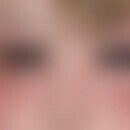Synonym(s)
DefinitionThis section has been translated automatically.
Symptomatic inflammatory disease of the nose caused by an IgE-mediated (type I allergy) allergic reaction of the nasal mucosa after exposure to allergens (mostly pollen ( pollinosis) from grasses, cereals, trees, shrubs and herbs). Allergic rhinitis (AR) can be classified as follows:
- seasonal allergic rhinitis
- Perennial allergic rhinitis
- Occupational allergic rhinitis.
Occurrence/EpidemiologyThis section has been translated automatically.
Most frequent atopic manifestation with a lifetime prevalence of >20%. Most common immune disorder (Brozek et al 2010). A familial predisposition (first-degree relatives) represents the greatest risk factor for the development of an allergic disease.
Prevalence in 13-year-old school children: boys: 22-24%, girls: 19-22%. Patients with allergic rhinitis have 3.2 times the risk of suffering from asthma compared to the normal population.
6-8% of 60-year-olds develop allergic rhinitis.
Food allergies in childhood predispose to later bronchial asthma (probably also to allergic rhinitis)
You might also be interested in
EtiopathogenesisThis section has been translated automatically.
The following inflammatory mediators play a role in allergic rhinitis:
Histamine: from mast cells and basophilic granulocytes (sneezing, itching, vascular dilatation, increased permeability)
Leukotrienes: from mast cells, basophilic granulocytes, thrombocytes (vascular dilatation, increase in permeability)
Also: PAF, kinins, tryptase, interleukins 1, 3, 4, 8, 13; CCL5 (RANTES), eotaxin (see CCL11 below), gamma interferon, eosinophilic cationic protein(ECP).
Relevant allergens: In general, the sensitization rate depends on the distribution of allergens, their nature and their aggressiveness. Relevant allergens in the general population:
- Grasses: 12,7 %.
- House dust mites 8,9 %
- Cat 3,8 %
- Alternaria 1,1 %
Relevant occupational allergens:
- Flour and cereals
- animal hair, feathers
- plant allergens (e.g. cotton, wood dust, various foodstuffs)
- Insects
- Fungal spores
- Drugs
- Animal feed
- Components of detergents (e.g. detergent enzymes)
ManifestationThis section has been translated automatically.
In principle possible at any age. In children < 5 years the incidence is <5%. It is highest between 6 and 15 years of age. About 75% of the patients develop symptoms before the age of 25.
ClinicThis section has been translated automatically.
Sudden onset of sympotony with sneezing attacks and mostly watery secretion of the nasal mucosa (serous rhinorrhoea). Furthermore: nasal obstruction (stick sniffing, especially in perennial form), nasal pruritus with persistent sneezing attacks (especially in seasonal form); consecutive mouth breathing and nocturnal snoring.
The so-called nasal cycle (= mutual swelling and decongesting of the nasal mucosa with a duration of 2-8 hours) is disturbed. Further disturbance of the mucociliary clearance and the sense of smell.
There is often a hyperreactivity of the mucous membrane against specific and non-specific stimuli. The lifelong annoying symptoms have effects on the social life, school performance and work productivity of the affected persons.
AR is associated with comorbidities: conjunctivitis, sinusitis, sleep disorders, daytime fatigue, bronchial asthma, food allergies, atopic eczema. About 40% of patients with atopic eczema develop perennial rhinitis or allergic bronchial asthma. 30-40 % of children with allergic rhinitis develop allergic bronchial asthma later in life. The majority of patients with allergic bronchial asthma also suffer from allergic rhinitis or allergic rhinosinusitis.
DiagnosisThis section has been translated automatically.
Anamnestic evidence of a temporal connection between allergen exposure and nasal symptoms (if necessary, symptom diary)
Skin test(prick test) to detect specific allergic sensitization
Supplementary: Determination of the specific serum IgE to suspected allergens (especially in infants and children with pronounced atopic eczema) by means of a TAST test (this is often used as an enzyme-immunological procedure with various immunological methods (Immuno-CAP; Immulite).
In questionable situations (discrepancy between medical history and skin test or specific IgE determination): specific nasal allergen provocation
In the case of seasonal rhinitis allergica, the current sensitization often results from the medical history.
Positive skin test reaction (prick): Sensitization is present if the allergen reaction (wheal diameter) is at least 2/3 of the histamine wheals and > 3 mm.
Positive detection of specific IgE in serum: Sensitization is only present if the measured value is significant (observe the limit values for the respective method).
Measurement of the ECP concentration in nasal secretion (sceret extraction via a foam collector in the nasal lumen).
Mucosal provocation test: Indicated if medical history and skin test or serum IgE do not give a clear result. Positive reaction to nasal provocation (anterior rhinomanometry and/or clinical evaluation)
Differential diagnosisThis section has been translated automatically.
Acute bacterial rhinosinusitis; acute viral rhinopharyngitis; postinfectious rhinitis, pseudoallergic (non-allergic) rhinitis, anatomical changes of the nasal skeleton (saddle nose, septal deviation); idiopathic rhinitis; toxic irritant rhinitis (environmental pollutants), endocrine rhinitis, nerve-reflector rhinitis, polyposis nasi.
General therapyThis section has been translated automatically.
In principle, the complete elimination of the causative allergen is the most efficient form of treatment.
External therapyThis section has been translated automatically.
- Alpha-mimetics: In acute seizures xylometazoline (e.g. Olynth, Otriven). No permanent use due to trophic damage to the nasal mucosa!
- Antihistamines: As an alternative to alpha-mimetics in acute attacks or prophylactically during the time of the pollen count Levocabastine (e.g. Livocab, Levophta eye drops). No privinism can develop due to antihistamines!
- Mast cell stabilizers: In mild cases, prophylactically during the pollen season sodium cromoglicate spray (e.g. Lomupren) 4 times (max. 8 times) daily 1 spray in each nostril.
- Glucocorticoids: Prophylactically in case of pronounced nasal obstruction or bronchial accompanying reaction during the time of pollen flight Nasal sprays containing glucocorticoids such as budesonide spray(e.g. Pulmicort Topinasal) one spray in each nostril in the morning and one in the evening. Use only seasonally, no permanent use due to trophic damage to the nasal mucosa!
- Combination preparations: Fluticasone+Azelastine in the form of a nasal spray (Dymista®) have proven to be a successful acute measure in everyday clinical practice.
Internal therapyThis section has been translated automatically.
Oral newer non-sedating antihistamines, lower efficacy than topical antihistamines, but approved predominantly from the second or third year of life).
Leukotriene receptor antagonists (e.g., montelukast; not yet approved for this indication); approximately equivalent reduction of allergic symptoms as by oral non-sedating antihistamines, but effective in only one-third of patients. Combination with antihistamines possible. Leukotriene receptor antagonists are also positively effective on coexisting allergen-induced bronchial asthma.
Interventional therapy: Allergen-specific immunotherapy (ASIT) also called hyposensitization or specific immunotherapy: subcutaneous injections of the respective allergen in increasing concentrations over a period of three years, best results when continued even during the season in lower concentrations. Indication for hyposensitization: Pollen sensitization with more severe symptoms (additional preventive effect on the development of bronchial asthma under discussion), house dust mite sensitization with persisting chronic symptoms despite allergen avoidance measures and medicinal local therapy (rare) or pollen sensitization with simultaneous existence of allergen-induced bronchial asthma (thereby positive influence on asthma and possible extension of sensitization).
Experimental trials with Botox should be evaluated (12.5 units of BTX-A diluted in 0.3ml saline injected into the posterior nasal wall - Zhang EZ et al. 2017).
As a food supplement, a targeted micronutrient supplementation with holo-BLG beta-(lactoglobulin from organic raw milk), zinc, iron and vitamin A as a lozenge is approved, which has led to > 50 % reduction of symptoms, according to the farm effect, therefore also cow pill: preparation: immunoBON®.
Note(s)This section has been translated automatically.
Comorbidities: Allergic rhinitis rarely occurs in isolation. More often, combinations of different diseases of the atopic form are present simultaneously. About 40% of patients with atopic eczema develop perennial rhinitis or allergic bronchial asthma. 30-40% of children with allergic rhinitis develop allergic bronchial asthma later in life. The majority of patients with allergic bronchial asthma also suffer from allergic rhinitis or allergic rhinosinusitis.
Children who have antibodies against hen's eggs at the age of 1 year have an increased risk of developing antibodies against indoor allergens and pollen (grasses, birch) and thus an allergic rhinitis at the age of 3 years.
Breastfeeding as prevention: Breastfeeding is often recommended as a preventive measure in the case of atopic family history. However, larger studies (n=335) do not prove this for the allergic bronchial asthma.
Pets: The topic of allergen prevention is controversially discussed (e.g. keeping pets).
Skin tests: Antihistamines should be discontinued at least 3 days before the skin tests. Taking oral corticosteroids up to 30 mg/day prednisolone equivalent up to one week before the tests does not reduce skin reactivity if stopped within the prescribed period. Topical application of steroids in the test area should be avoided. In case of doubt, skin reactivity should be tested in advance using a positive control.
A positive allergy test (skin test or specific IgE determination) does not always prove the clinically current sensitization. The confirmation of the allergy test by a corresponding clinical observation in the allergen-relevant time is convincing. If there is a clear correlation between exposure and symptoms and simultaneous evidence of specific sensitization in the skin test or by specific IgE determination in serum, nasal provocation is unnecessary.
Exclusion: Negative skin test for all potential inhalation allergens or negative specific IgE determination. Safe exclusion in case of negative mucosal provocation.
Diagnostics not required: If there is a clear correlation between exposure and symptoms and simultaneous detection of a corresponding specific sensitization in the skin test or by specific IgE determination in serum,nasal provocation is notrequired.
Caution! Beware of the development of a floor change in case of insufficient therapy!
LiteratureThis section has been translated automatically.
- Brozek JL et al (2010) Allergic rhinitis and its impact on asthma (ARIA) guidelines: 2010 revision. J Allergy Clin Immunol 126:466-476.
- Jelding-Dannemand E et al (2015) Breast-feeding does not protect against allergic sensitization in early childhood and allergy-associated disease at age 7 years. J Allergy Clin Immunol 136: 1302-1308.
- Kremer B et al (2003) Natural history of eosinophil cationic protein in nasal secretions of patients with seasonal allergic rhinitis. Allergology 26: 135-141
- Mösges R (2003) Prevention and therapy of allergies - do we have to rethink? Skin 14: 230-233
- Oertmann C et al (1997) The increase of pollen-associated oral allergy syndrome. Allergology 20: 611-619
- Sennekamp J et al. (2002) German Society of Allergology and Clinical Immunology (DGAI) and Ärzteverband Deutscher Allergologen e.v. (ÄDA) AWMF Guideline Register No. 061/013.
- Zhang EZ et al. (2017) Botolinum toxin in rhinitis: literature review and posterior nasal injection in allergic rhinitis. Laryngoscope doi: 10.1002/lary.26616.
- Bergmann K-C et al. (2021) Targeted micronutrient supplementation with holo-BLG based on the farm effect in patients with house dust mite-induced rhinoconjunctivitis-first evaluation in an allergen exposure chamber. Allergo J Int 30: 141 -149
Incoming links (63)
Allergic rhinoconjunctivitis; Allergic rhinosinusitis; Atopic diathesis; Atopy; Atopy; Azelastine; Balloon vine; Beclomethasone dipropionate; Boswellia serrata Roxb.; Budesonide; ... Show allOutgoing links (24)
Allergic rhinoconjunctivitis; Antihistamines, systemic; Astragalus membranaceus; Atopic dermatitis (overview); Bronchial asthma (overview); Ccl11; CCL5; Ecp; Floor change; Food allergy; ... Show allDisclaimer
Please ask your physician for a reliable diagnosis. This website is only meant as a reference.




